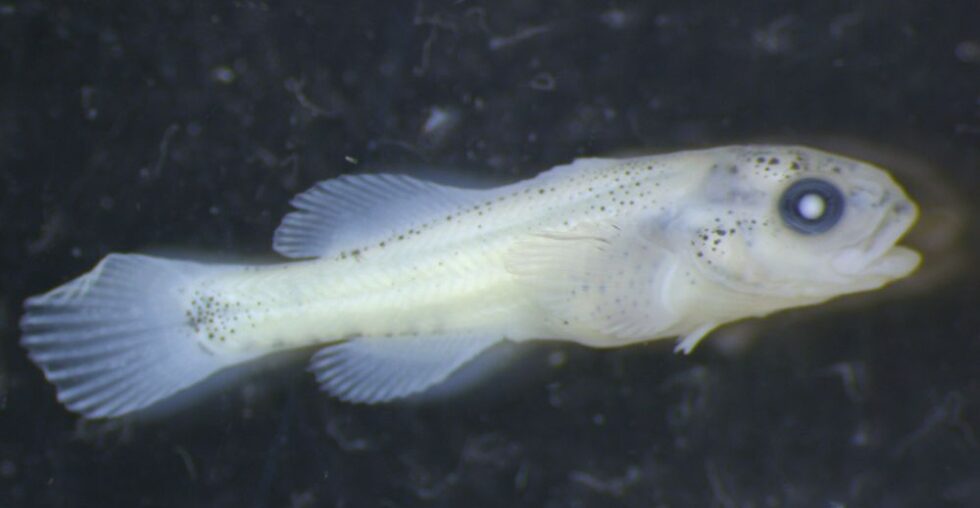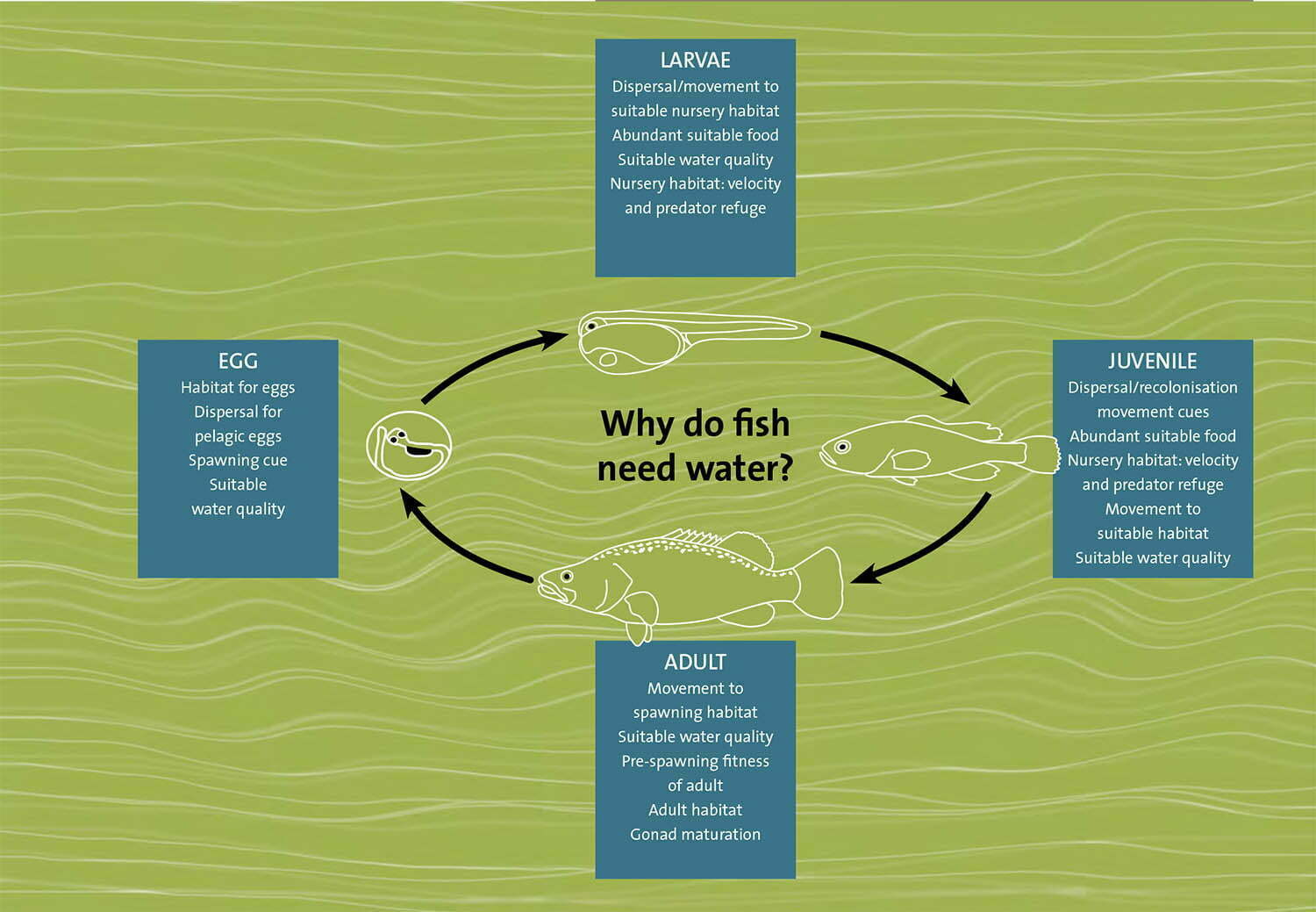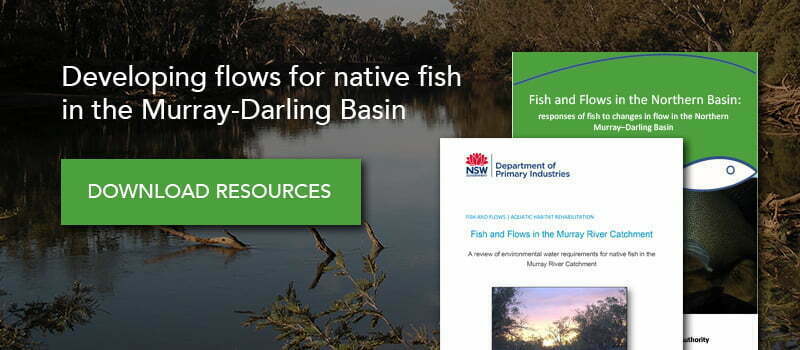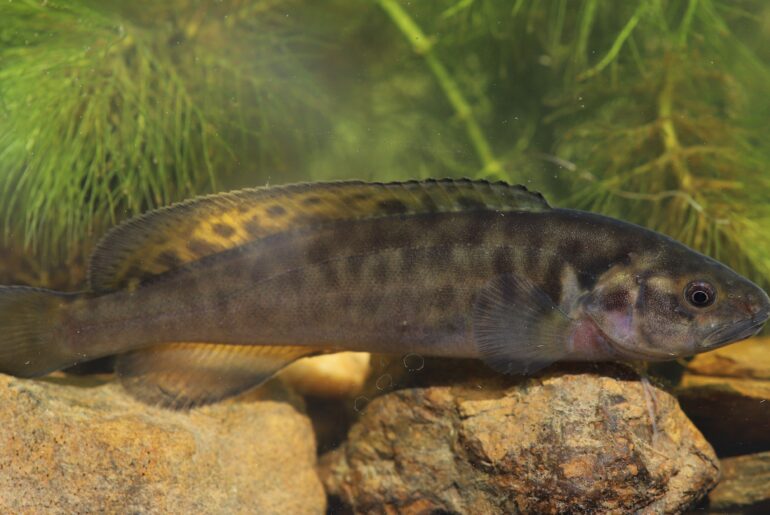Native fish thrive and survive when they are provided with the right habitat and environmental conditions. Some fish, such as Golden perch, prefer to live in flowing streams where flow pulses are generally required to generate a spawning response, with some individuals migrating over 1000 kilometres upstream to breed. Their eggs and larvae also benefit from flowing water which carries them downstream enabling wider dispersal.
In contrast, Southern pygmy perch avoid flowing water, preferring still pools or wetlands with lots of aquatic plants, in which they complete their life cycle. In either scenario, water flow has an important role to play in the lifecycle stages of native fish. Here’s a quick look at how the stages are influenced and supported by flow:
Eggs
For many native fish, water flow can act as a spawning cue, stimulating fish on to breed and find suitable habitat to lay their eggs.

Some native fish lay their eggs in hollow logs or on snags, others use undercut banks or aquatic vegetation. Others, like the freshwater catfish, make a nest from gravel and will return to the same nest year after year. When snags are removed it is like bulldozing a person’s house, as fish call snags ‘home’. Snags also stabilise the riverbed, so when they are taken away the gravel that catfish rely on gets swept away downstream.
Water flow also plays a role in the dispersal for pelagic eggs (egg which float freely in the water column and are often slightly positively buoyant), while some species reply on flow to protect their nests and prevent them from being dried out.
Larvae and juvenile fish
As the eggs hatch, larvae and juvenile fish often drift with the flow to more suitable nursery habitats where there is abundant food and optimal water quality, as well as refuge from potential predators. Juvenile fish also use water flow for recolonisation movement cues.
Settlement and consequent concentration of large numbers of drifting larvae in weir pools can lead to poor downstream dispersal because of reduced flow in these environments. Water diversion from weir pools can also potentially result in the removal of many eggs and larvae from the river system.
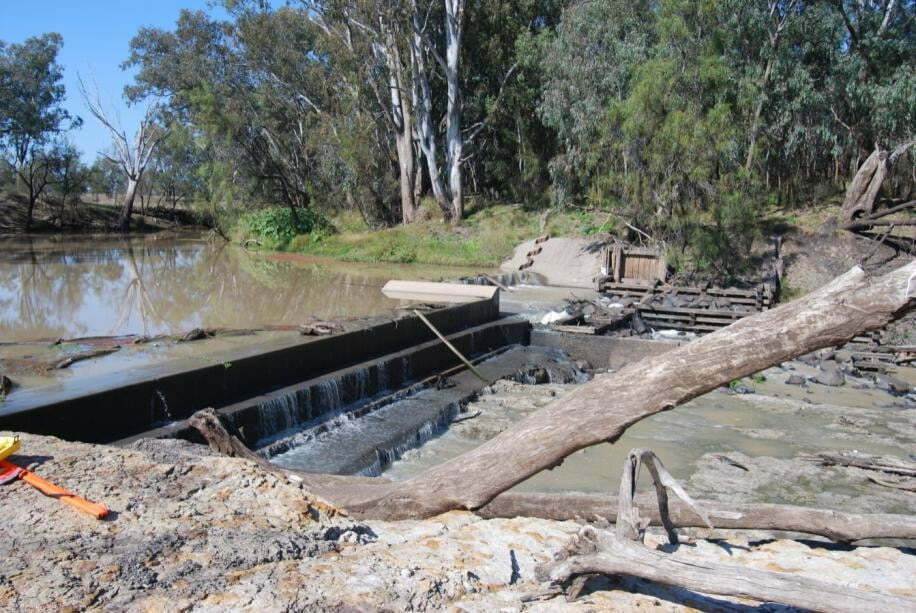
Adult fish
For adult fish, flow allows for pre-spawning fitness, as well as movement to spawning habitats and suitable water quality for feeding and breeding.
There are 46 native fish species in the Murray–Darling Basin (MDB), and each one has evolved differently to the boom and bust nature of flow common in Australian rivers. This means they are reliant on the variety of different flows experienced within a river in order to breed and thrive.
The infographic shared here is a new resource that combines research, science and our learning so far, in developing flows for native fish in the Murray-Darling Basin. We hope you find them useful and please share them widely with anyone you think might be interested.
Click the image below to download your copy.
Related stories:
https://finterest.com.au/how-and-why-people-change-the-flow-of-water-understanding-natural-vs-regulated-flows/
Environmental flows – connecting hydrology and freshwater biodiversity
